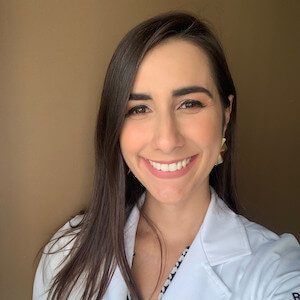A typical symptom of ovulation for some women, ovulation pain can indicate that the fertile period has arrived and it’s time to have intercourse. However, not all women know that the discomfort that appears for some time during the cycle may signify the expected ovulation. But do you know why ovulation pain happens and how to identify it?
Ovulation occurs in the ovaries,1, which is where the eggs that a woman produces while still a fetus are stored. The entire ovarian reserve is produced while still in the mother’s womb. During the fertile period, these eggs are stimulated by hormones and, once mature, the follicle they are in ruptures and the woman ovulates. Ovulation pain appears when this stimulation reaches its peak. With all the estrogenic and LH hormonal activity, the ovaries, influenced by these hormones, become larger. The normal size of an ovary is 45 cubic centimeters or 30 mm x 15 mm x 15 mm. However, during ovulation this size increases significantly. In most cases, it can reach up to 90 cubic centimeters.
In each cycle, one of the ovaries receives the estrogenic concentration to produce follicles and, among these, only one will grow to mature the egg. In every cycle, there is a follicular recruitment, where several follicles are recruited and of these, only one will be stimulated. Inside it will be an egg that will mature and be ovulated. The other follicles eventually die, that is, they go into atresia, and the eggs inside them are lost. The increase is due to stimulation—and so is the pain!
How to Identify Ovulation Pain
Ovulation pain is characterized by its location2. The uterus is located about four finger-widths below the belly button, and the ovaries are at the same height. The pain can appear on one side or across the entire abdominal region. This depends on whether you are ovulating on the left, right, or on both sides (which is much rarer).
Ovulation Symptoms
Ovulation symptoms are similar to the pain of a mild knock. They can also present as twinges, cramps, and stronger pulling sensations, as well as a pain in the lower belly on either the left or right side. All of this is characteristic of this period due to hormonal increase and also due to the activity of the fallopian tubes, which move around, and more sensitive women feel these movements.
These ovulation symptoms may seem more intense in some women than in others, especially those who have taken medication to induce ovulation. For example, women who have used Clomid may feel much more bloated ovaries. Therefore, ovulation pain can become bothersome to the point that a medical examination is needed to rule out the possibility of ovarian hyperstimulation.
How Long Symptoms Last
In general, ovulation symptoms, including the pain, last around one week. They vary in intensity from stronger to milder. They are more easily identified when the woman is lying down and tries to palpate the sore region.
If it is a little to the left, right, or on both sides, it is probably ovulation pain. However, the pain should not last more than eight days and should not be so intense that it prevents you from carrying out your normal activities. If this happens, it’s advisable to see a doctor to check what may be happening.
Remember: the most fertile day theoretically for 28-day cycles is on the 14th day before the next menstruation. The fertile week is the three days before and three days after the most fertile day.
However, we see more and more that this theory does not always hold true. The duration of the fertile period is flexible, even for women with regular cycles. It is possible for ovulation to happen at any time in the cycle, even if there is a predicted date for ovulation.
For women with irregular cycles, symptoms are essential to identify the beginning of the fertile period. For this, it’s worth checking the post about identifying and confirming ovulation with an ovulation test, just to make sure ovulation is happening, regardless of the symptoms.
Readers’ Questions:
How to increase ovulation naturally?
The best tip to naturally increase ovulation is to use yam3 in recipes. It can be consumed in soups, stews or even through teas with yam peels. If you have trouble consuming it with meals, there is an option to take it in yam capsules.
How to relieve ovulation pain?
Some women may suffer from intense pain during ovulation. For relief, they can use painkillers to reduce pain, warm baths, hot water bottles on the abdomen, and drink plenty of fluids, as well as rest.
How do ovulation inducers work?
The agents in ovulation inducers increase the production of hormones that stimulate the ovaries’ activity, which in turn release the much-awaited eggs. Ovulation inducers are normally recommended for women with polycystic ovary syndrome.
See also: When Does Ovulation Occur – Having Intercourse Exactly on the Fertile Day











